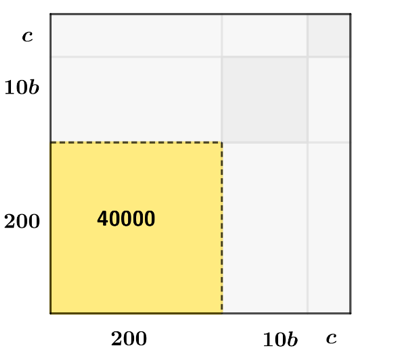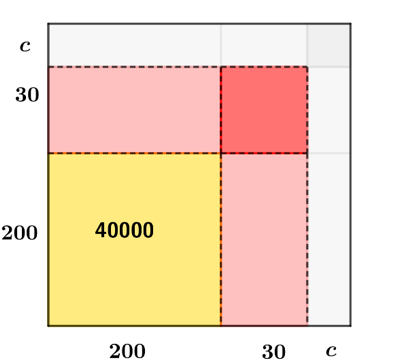- About MAA
- Membership
- MAA Publications
- Periodicals
- Blogs
- MAA Book Series
- MAA Press (an imprint of the AMS)
- MAA Notes
- MAA Reviews
- Mathematical Communication
- Information for Libraries
- Author Resources
- Advertise with MAA
- Meetings
- Competitions
- Programs
- Communities
- MAA Sections
- SIGMAA
- MAA Connect
- Students
- MAA Awards
- Awards Booklets
- Writing Awards
- Teaching Awards
- Service Awards
- Research Awards
- Lecture Awards
- Putnam Competition Individual and Team Winners
- D. E. Shaw Group AMC 8 Awards & Certificates
- Maryam Mirzakhani AMC 10 A Awards & Certificates
- Two Sigma AMC 10 B Awards & Certificates
- Jane Street AMC 12 A Awards & Certificates
- Akamai AMC 12 B Awards & Certificates
- High School Teachers
- News
You are here
On Squares, Rectangles, and Square Roots - Square roots in ancient Chinese mathematics
Square root extraction is an important topic treated in many ways throughout the history of mathematics. One of the most important ancient Chinese mathematical books, The Jiuzhang Suanshu (Nine Chapters on the Mathematical Art), compiled by several authors during the Han Dynasty (206 BCE – 220 CE), devotes Chapter 4, Shao guang (Short width), to problems about shortening the length of a field with increasing width but constant area. The method of finding square roots described there, Kai Fang (Method of Opening the Square), determines the square root by an iterative procedure based upon successive approximations by completing squares. Nevertheless, there are few occurrences of instructions describing the method followed to compute the square root of a number. The first detailed description of the procedure, reasoned with geometrical arguments, was given in the commentary on the Nine Chapters by Liu Hui in the third century CE. [3], [9]
Briefly speaking, Liu Hui's method for finding the square root proceeds by determining a whole number \(a\) whose square is less than or equal to the given area \(S\); that is, \(a^2\le S.\) If \(a^2=S,\) then \(a\) is the square root of \(S\), and we have finished. Otherwise, if \(a^2< S,\) then we take \(a\) as the first approximation of the square root of \(S\). Next, we obtain a whole number \(b\) such that \(a^2+2ab+b^2\le S.\) In this way, if \(a^2+2ab+b^2=S\), then \(a+b\) is the square root of \(S\) and the extraction is finished. But if \(a^2+2ab+b^2<S\), then the algorithm continues to find an integer value \(c\) for which \(a^2+2ab+b^2+2ac+2bc+c^2 \le S,\) and so on. If \(S\) is a perfect square, this process will eventually stop! Figure 1 depicts the case in which \(a^2+2ab+b^2+2ac+2bc+c^2 = S\) [3, p. 247]. In this case, the square root of \(S\) is \(\sqrt{S} =a+b+c\) and \(S\) itself is the square \[S={(a+b+c)}^2 = a^2+2ab+b^2+2ac+2bc+c^2.\]

Figure 1. Kai Fang for an integer \(S\) with \(S={(a+b+c)}^2\).
The example discussed by Liu Hui in his Problem 12 of Chapter 4 of the Nine Chapters consists of the calculation of the square root of \(55225\) [3, pp. 247-248]. First, let us think about the number of digits in the length of the side of a square with area \(55225.\) Since \[100^2 = 10000<55225<998001 =999^2,\] then \(55225\) (and every other five-digit whole number that is a perfect square) has as its square root an integer with three digits. For \(55225,\) let's call the square root \(abc\) with polynomial expression \(100a+10b+c.\) (Note that we have altered somewhat the scheme illustrated in Figure 1. Now, the side length of the yellow square is \(100a,\) of the red square is \(10b,\) and of the blue square is \(c,\) with the side length of the entire square \(100a+10b+c,\) or the three-digit integer \(abc.\))
We consider now the following decomposition of \(S=55225\): \[S=50000+5200+25.\] (Here, the number is divided into groups of two significant digits starting on the right.)
We first find the largest integer \(a\) whose square is less than or equal to \(5,\) and thus for which \((100a)^2\) is less than or equal to \(50000.\) If we take \(a=2,\) the area of the square of side \(100a=200\) (the yellow square in Figure 2) leaves as a remainder the area \(55225 - 40000 = 15225\). The latter is the area of the gnomon that remains when the yellow square is removed from Figure 2.
Next, following the geometrical argument by Liu Hui, this gnomon of area \(15225\) can be decomposed into two \(200\times (10b+c)\) rectangles of area \(200(10b+c)\) and a square of side length \(10b+c\) and area \((10b+c)^2\).
 |
 |
Figure 2. The first two (of three) steps in obtaining the square root of \(55225\).
Ignoring for now the value of \((10b+c)^2\), we seek \(b\) such that \[2\cdot 200\,(10b+c)\le 15225.\] Ignoring \(c\), this requires \[400\cdot 10b=4000b\le 15225.\] Since \(4000\cdot 3=12000<15225,\) but \(4000\cdot 4=16000>15225,\) we set \(b=3.\) With \(a=2\) and \(b=3\), the area of the gnomon is: \[2\cdot (100a)(10b+c) + (10b+c)^2 =12000+400c+900+60c+c^2 = 15225,\] so that \(c^2 + 460c = 2325.\) Since \(c=5\) satisfies this equation, we have determined that the square root of \(55225\) consists of digits \(a=2\), \(b=3\), and \(c=5\), and is \(abc=235\) (or \(100\cdot 2 + 10\cdot 3 +5 = 235).\)

Figure 3. The square root of \(55225\) is \(235.\)
In our classroom experience with sixth grade students, described in the next section, we worked with perfect-square three-digit integers, all of which have two-digit square roots. Therefore, our scheme consisted of just the yellow and red parts of the diagrams above and we sought square roots of the form \(10a+b.\)
María Burgos (University of Granada, Spain) and Pablo Beltrán-Pellicer (University of Zaragoza, Spain), "On Squares, Rectangles, and Square Roots - Square roots in ancient Chinese mathematics," Convergence (December 2018)




